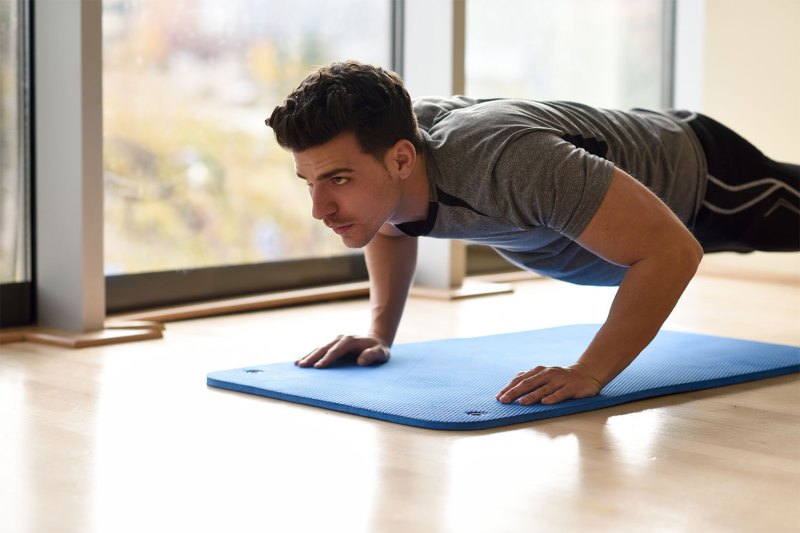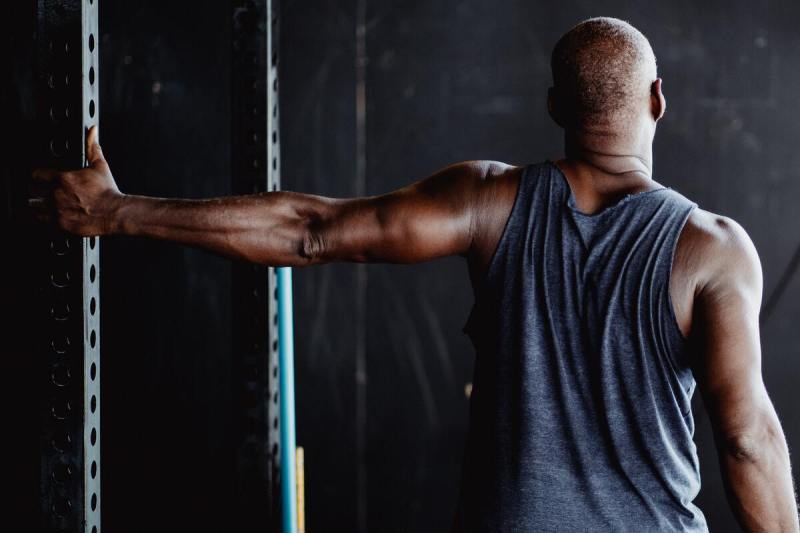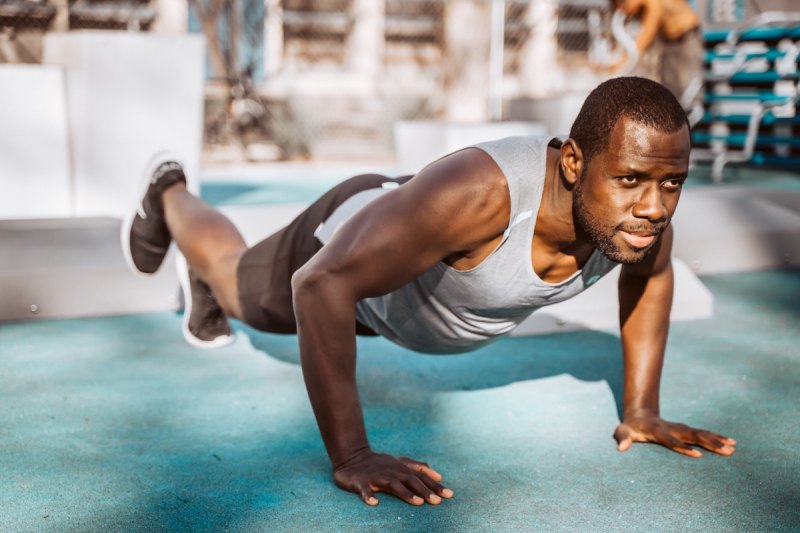
For most men, the ideal chest looks like something you’d see on a superhero or Greek god: Big, broad, and well-defined pectoral muscles, or “pecs.” A sculpted chest helps you lift kids or heavier objects easily, signifying you have the strength and confidence to accomplish these tasks. Chest workouts can help you get there.
Some moves may require gym equipment, but some of the best chest exercises require little (or no) body weight. Hello, pushups.
These are the best chest workouts for building a solid upper body. To benefit from these exercises, supplement them with our best back workouts for men.

Why do I need to build chest strength?
Performing chest exercises will do so much more than help you get chiseled. Some men may not be able to get the “bodybuilder” aesthetic — genetics and other lifestyle factors play a role. Still, you’ll want to add these exercises to your routine for other health and quality-of-life perks.
You use your chest muscles a ton for day-to-day tasks. The chest has some of the largest muscles in the upper body, the pectoralis major and the pectoralis minor. These muscles aid in mobility, flexibility, and rotation. When you easily push open a door, you can thank your chest muscles. These muscles also allow you to push yourself off the floor, lift items, and shampoo your hair.

Pushup
Equipment needed: None
This classic exercise is perfect, as it is easy to do at home or on the road while traveling.
Here’s how to do it
The pushup can be done with variations based on the width of your hands. For starters, begin high in the pushup position with your arms slightly wider than shoulder width. Keep your core tight and your body straight. Lower your body toward the ground until your chest almost touches the ground, and push back up to the starting position. That’s one rep.
For a tougher variation, bring your hands in until they are directly under your shoulders. Lower and repeat. If you’re still looking for more, bring your hands closer together, forming a diamond shape with your thumbs and index fingers touching the other hands.
If you’re new to a pushup regimen, start with a realistic number and do three to four sets of that number. Add to that number while doing the exercise regularly.

Dumbbell bench press
Equipment needed: Bench and set of dumbbells
Here’s how to do it
Lie flat on a bench. You can also use an ottoman or an inflatable exercise ball. With a dumbbell in each hand, hold the weights at shoulder level and then press the weights straight up, and slowly lower back to the starting position. That’s one rep.
Variation: If you have a bench that inclines, adjust it to an angle that is roughly 30 to 45 degrees. Lying back on the bench with a dumbbell in each hand and at shoulder level, press the weights up over your chest.

Dumbbell fly
Equipment Needed: Bench and set of dumbbells
Here’s how to do it
Lie with your back flat on the bench with a dumbbell in each hand and your feet resting on the floor. With a slight bend in your elbows, slowly lower the dumbbells until they are even with your chest. Use care so that you don’t overstretch and drop below your chest. With pecs flexed, return to the starting position. Consider starting with lightweight dumbbells and concentrate on your form when beginning.
Variations: This dumbbell workout can also be done on an inflatable exercise ball instead of a bench. Flys done on an incline bench target the upper portion of the pecs.

Pullover
Equipment needed: One dumbbell or medicine ball
Here’s how to do it
Lie on the floor and hold a single dumbbell (or medicine ball) over your chest with both hands. Lower the weight back over your head (only slightly bending your elbows) until you can feel a slight stretch in your latissimus dorsi (more commonly referred to as “lats”). Then, pull the dumbbell back over your head and return to the starting position. This is one rep. Start with low weight and gradually increase.

Floor press
Equipment needed: Set of dumbbells
Here’s how to do it
Lie on the floor (you can use a mat if you have one) with a dumbbell in each hand. Press the dumbbells up with your palms facing one another and your triceps resting on the floor. Slowly lower them until only your triceps are resting once again on the floor. This is one rep. Gradually increase the weight with subsequent sets for best results.

Cable fly
Equipment needed: Cable machine, stirrup handles, and high-pulley cables
Here’s how to do it
For one of the best chest exercises to do at the gym, you’ll want to head to the cable machine for this one. Put a pair of stirrup handles on high-pulley cables if they are not already attached. Pull your hands/arms together, and make sure you’re using your chest muscles when you do the movement.

Plank
Equipment needed: None
Here’s how to do it
Planks aren’t merely ab exercises. Because a plank requires you to hold yourself up, the move is one of the best chest workouts. Start in an all-fours position with the shoulders and wrists in one line. Keeping the upper body steady, step your legs back so they stretch out behind you. Pull the belly button in toward the spine. The spine should be neutral — watch that the lower back doesn’t sag. Hold for 30 to 60 seconds, gradually increasing time as you feel stronger.



